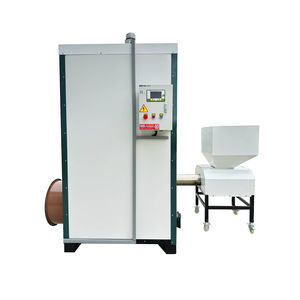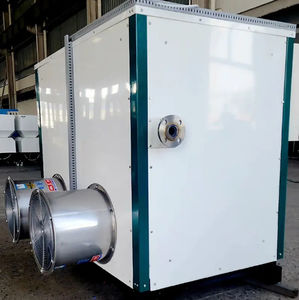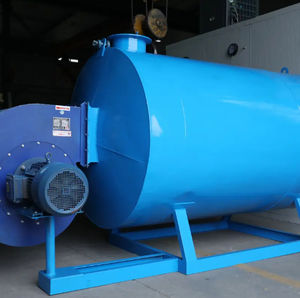
- Building - Construction
- Industrial Building Equipment
- Electric air heater unit
- Sichuan Western Flag Drying Equipment Co., Ltd

- Company
- Products
- Catalogs
- News & Trends
- Exhibitions
Electric air heater unit AHRD300S-X-HJfloor-standing





Add to favorites
Compare this product
Characteristics
- Power source
- electric
- Mounting
- floor-standing
- Heating power
24,000 W
Max.: 59.2 W
(202 BTU/h)Min.: 23.5 W
(80.19 BTU/h)
Description
The air heat dryer applies the reverse Carnot cycle principle to draw heat from the air and transfer it to the room, raising the temperature to assist in drying items. It includes a finned evaporator (external unit), a compressor, a finned condenser (internal unit), and an expansion valve. The refrigerant consistently experiences evaporation (absorbing heat from outside)→compression→condensation (emitting heat in the indoor drying room)→throttling→evaporative heat and recycling, thereby moving heat from the external low-temperature environment to the drying room as the refrigerant circulates within the system.
Throughout the drying process, the high-temperature heater constantly warms the drying room in a cycle. Upon reaching the set temperature inside the drying room (e.g., if set at 70°C, the heater will automatically cease operation), and when the temperature drops below the set level, the heater will automatically resume heating. The dehumidification principle is supervised by an in-system timer relay. The timer relay can determine the dehumidification duration for the dehumidifying fan based on the humidity in the drying room (e.g., programming it to run for 1 minute every 21 minutes for dehumidification). By utilizing the timer relay to control the dehumidifying period, it effectively prevents heat loss in the drying room due to the inability to regulate the dehumidifying duration when there is minimal moisture in the drying room.
VIDEO
Catalogs
No catalogs are available for this product.
See all of Sichuan Western Flag Drying Equipment Co., Ltd‘s catalogsOther Sichuan Western Flag Drying Equipment Co., Ltd products
Heater
*Prices are pre-tax. They exclude delivery charges and customs duties and do not include additional charges for installation or activation options. Prices are indicative only and may vary by country, with changes to the cost of raw materials and exchange rates.













